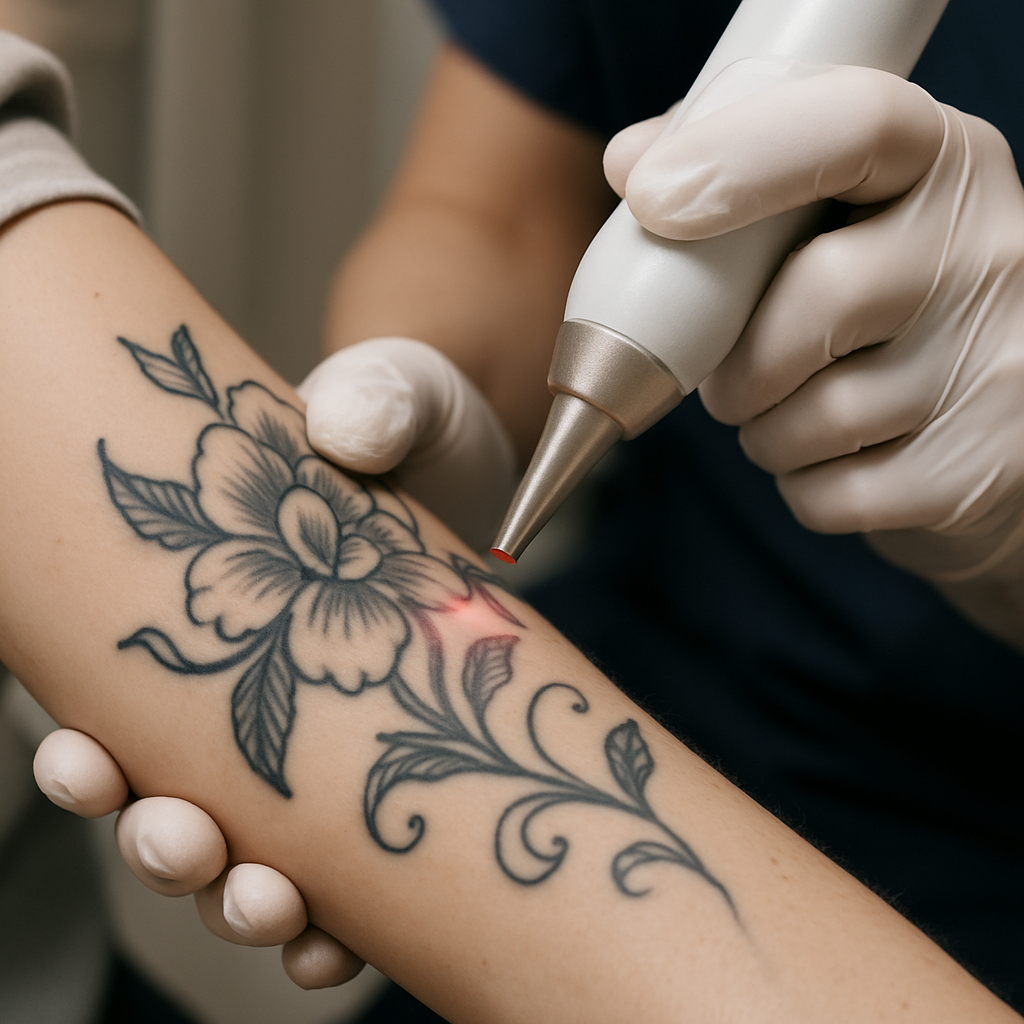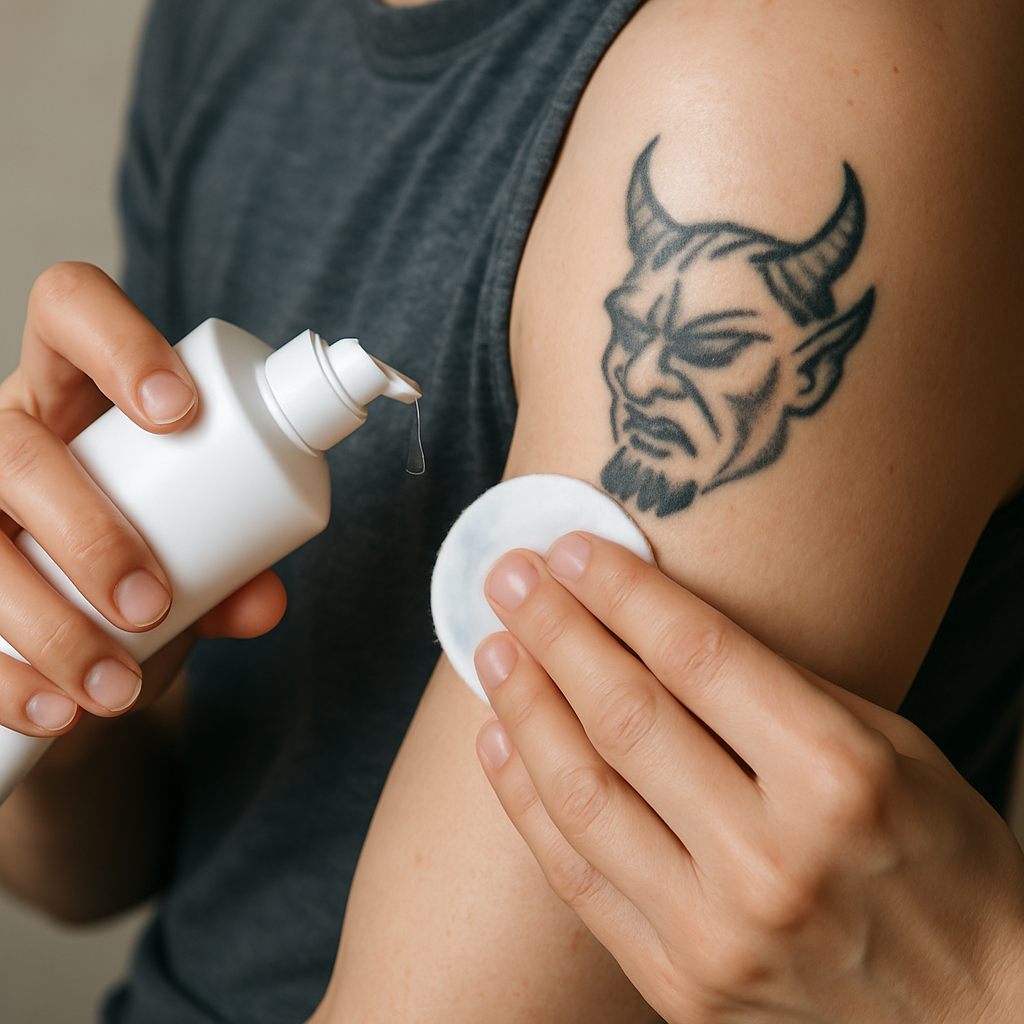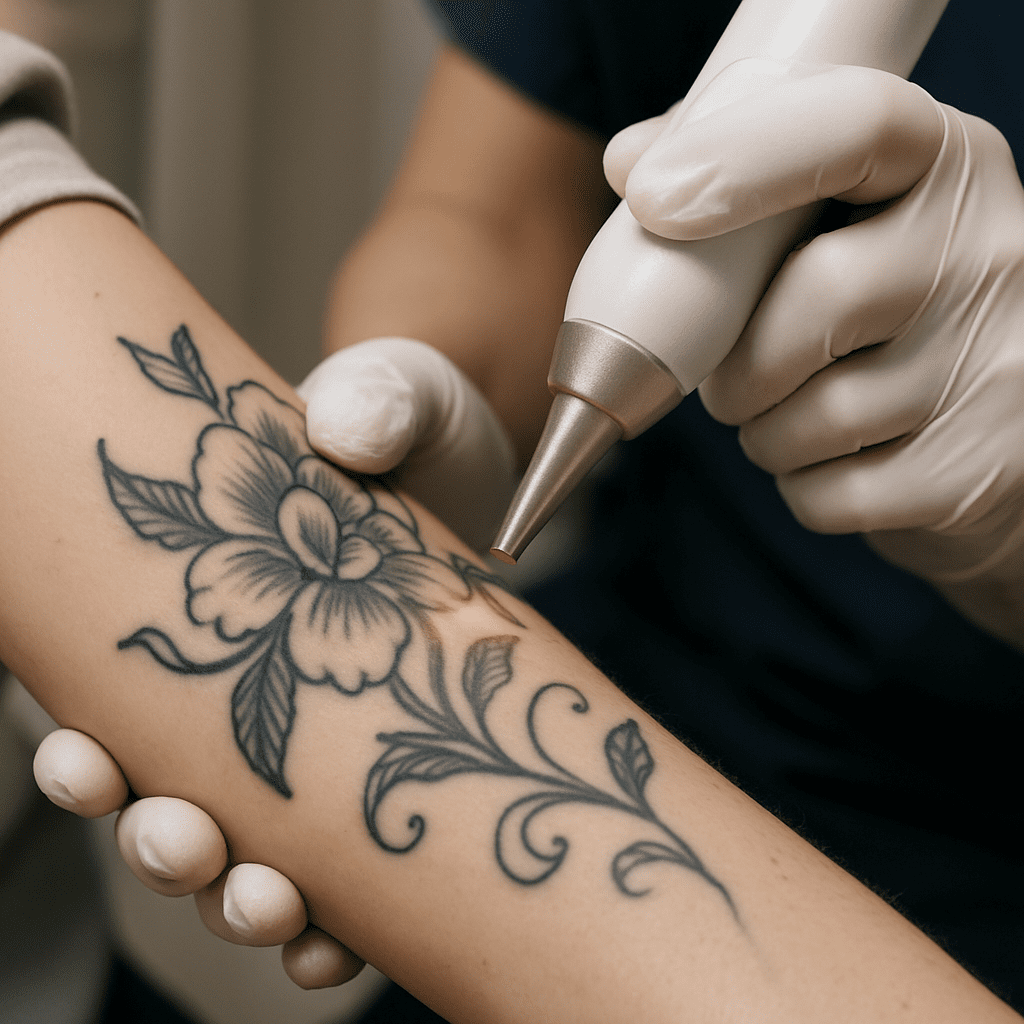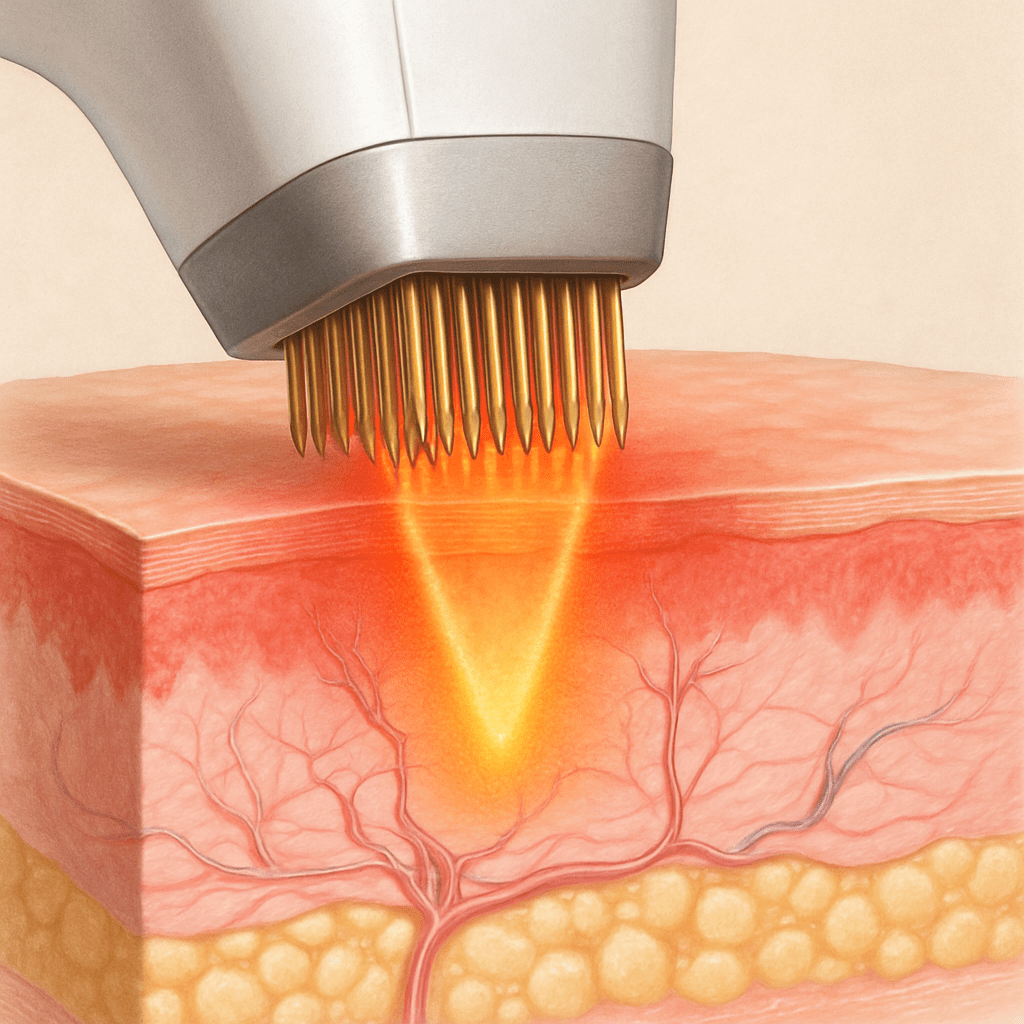Ever stared at a tattoo you once loved and thought, “How on earth do I get rid of this thing?” You’re definitely not alone. Tattoo removal is a journey, and one of the biggest questions people ask is, how many sessions for laser tattoo removal will it take?
It’s tempting to imagine a quick zap and poof, the tattoo’s gone. But the reality? It’s more like peeling an onion layer by layer. Laser tattoo removal works by breaking down the ink particles so your body can clear them out naturally, and that process takes time.
So, why does the number of sessions vary so much from person to person? Think about it this way: your tattoo’s size, color, the age of the ink, and even your skin type all play a part. Darker inks like black often respond faster, while certain colors like green or yellow can be stubborn. And if your tattoo’s on an area with less blood flow—like your ankle—it might hang around a bit longer.
Another factor is something most folks overlook: the laser technology itself and the expertise of the technician. Trust me, a skilled eye and the right equipment make a world of difference in how many treatments you’ll need and how your skin recovers between sessions.
What does this mean for you? On average, most people need anywhere from 6 to 12 sessions, spaced several weeks apart to give your skin time to heal and your body time to flush out the ink. Getting impatient might backfire and slow down the process.
Curious about what to expect next or how to prepare for your sessions? At Simcoe Cosmetic Clinic, we’ve got detailed guides to walk you through every step, so you feel confident and ready.
And hey, while you’re sorting through the tattoo removal journey, you might find some unexpected inspiration in timeless moments—like captivating romantic R&B songs that define elegance and allure. Sometimes, a smooth soundtrack makes any process a bit easier.
Ready to dive deeper into what laser tattoo removal can do for you? Let’s jump right in and figure this out together.
TL;DR
Wondering how many sessions for laser tattoo removal you might need? It usually takes between 6 and 12 treatments, depending on your tattoo’s size, colors, and location. Patience is key—rushing won’t speed things up and might even slow your skin’s healing.
Skilled technicians and top-notch laser tech really matter here. Think of it like peeling layers slowly, not scraping off paint in one go.
Step 1: Understanding Laser Tattoo Removal and How It Works
You know that feeling when you realize a tattoo you once loved now just isn’t you anymore? Maybe it’s that impulsive teen decision or a design that doesn’t fit your current vibe. Whatever the reason, laser tattoo removal offers a way out—slow, steady, and thoughtful.
But here’s the thing: laser tattoo removal isn’t magic. It’s a process. That’s why understanding how it works can save you from expecting instant results—and frustration.
What exactly does laser tattoo removal do?
Think of your tattoo ink like tiny, stubborn dots of color sitting beneath your skin. When the tattoo was placed, ink particles were injected deep enough that your immune system can’t remove them naturally—they’re just too big.
The laser treatment targets those ink particles with high-intensity pulses of light. Imagine a super focused flashlight blasting your ink. The laser heats up the ink, breaking it into smaller fragments. From there, your immune system gets to work flushing these tiny particles out over time.
So, you’re not actually melting or scraping the skin away; instead, you’re breaking down the ink so your body can clean it up naturally. This is why multiple sessions are necessary—to chip away at the ink bit by bit, allowing your skin to heal between treatments.
Why does it take so many sessions?
Picture your tattoo as if it’s painted on in layers of color, sometimes with different pigments lying at various depths beneath the skin’s surface. The laser can only break apart some ink particles at a time, and your body needs weeks to clear those fragments away before the next treatment.
That’s why you’ll hear that laser removal usually takes between 6 to 12 sessions, sometimes more depending on the tattoo’s size, colors, and location — according to dermatology experts. And it’s not just the ink colors; your skin type and immune response also play a big role.
Some colors are more stubborn than others. Black ink soaks up laser light well and fades faster, but reds, greens, and blues can be trickier because they absorb different light wavelengths. Plus, professional tattoos with dense ink require longer treatment than amateur or faded ones.
Does laser tattoo removal hurt?
Honestly, there’s no sugarcoating it: laser tattoo removal can hurt, but how much is a personal thing. Many describe it as the snap of a rubber band against your skin—sharp but brief. Others say it’s about the same or sometimes less painful than when they got the tattoo.
Your practitioner at Simcoe Cosmetic Clinic will usually apply a numbing cream or sometimes use a local anesthetic to keep you comfortable. After the session, treated skin might feel sore, swollen, or irritated—kind of like a sunburn.
Cool packs and over-the-counter pain meds can help, and following aftercare instructions closely is key to healing and preventing scarring.
What about side effects or risks?
Laser tattoo removal is generally safe when done by trained professionals. There’s still a chance for temporary redness, blistering, or changes in skin color, especially if you have darker skin tones, so it’s important that your provider tailors the treatment accordingly.
Scarring is rare but can happen if you don’t care for your skin properly after treatment. And here’s a crucial tip: don’t try removing your tattoo at home with creams or scrubs—these can hurt your skin and won’t break down the ink like a laser does.
Before you schedule your sessions, it’s wise to have a thorough consultation. At Simcoe Cosmetic Clinic, we evaluate your tattoo’s size, color, and depth plus your skin’s type to create the safest and most effective removal plan. You’ll leave knowing what to expect, how many sessions you might need, and how to care for your skin along the way.
So, thinking about how many sessions for laser tattoo removal you’ll need? Now you know it depends on more than just the tattoo itself—it’s a mix of art, science, and patience.
If you want a clear, personalized plan, talking to a skilled provider is your first step: the Cleveland Clinic outlines the importance of professional guidance in tattoo removal to achieve the best results safely.
Ready to take that leap? Understanding what’s happening beneath your skin can make the journey feel a lot more manageable.

Step 2: Factors Affecting How Many Sessions You Need
Ever wonder why two people with similar-sized tattoos might need totally different numbers of laser removal sessions? It’s not random — there’s a bunch of things at play here. Understanding these can totally change how you plan your treatment and set your expectations.
First up: tattoo size. Big surprise, right? A larger tattoo means more ink to break down, which typically means more sessions. But it’s not just about surface area. Think about a tattoo that’s six inches long but dense in ink versus one that’s the same size but faint and spread out. That density plays a huge role.
And speaking of ink, color matters more than you might guess. Dark colors like black and dark blue absorb laser energy better, so they often fade faster. Meanwhile, colors like green, light blue, and yellow can be pretty stubborn because lasers don’t target those pigments as effectively. Here’s a neat explainer on how different ink colors affect removal speed if you want to geek out a bit more according to top dermatology insights.
Okay, but what about the technique used when you got your tattoo? Older tattoos or those done by less professional artists usually have ink placed at different skin depths, sometimes deeper than usual. This furtive ink hides out from some lasers, stretching out the number of sessions needed.
Here’s a question: have you ever noticed how your skin reacts to sunlight? That’s your skin type kicking in. People with lighter skin tones might see quicker fading since lasers can focus more precisely without risking discoloration. On darker skin, lasers have to be a bit gentler, which often lengthens the process. That’s why clinics like Simcoe Cosmetic Clinic always evaluate your skin before recommending how many sessions you should book—it’s not one-size-fits-all.
And let’s not forget the aftercare you commit to. Healing between sessions isn’t just about avoiding sunburns or harsh skincare products. It’s about giving your skin time to clear away shattered ink particles. Skipping care or rushing sessions can backfire, prolonging your journey.
So, how many sessions are we talking here? Many experts suggest an average of four to six for medium tattoos around six inches in size, though some may need more depending on these factors. For example, specialists note that highly detailed, colorful tattoos tend to take longer.
Sound overwhelming? I get it. But here’s the thing—you’re not in this blind. Your provider can give you a tailored game plan based on all these elements. Knowing what’s under the hood means you can pace yourself and stay realistic.
Before we wrap up—have you considered the laser technology itself? Different lasers penetrate skin in unique ways, which can impact session numbers too. Plus, some advanced clinics, like Simcoe Cosmetic Clinic, use the latest devices to maximize ink breakdown while protecting your skin.
In the end, figuring out how many sessions for laser tattoo removal you need is like piecing together a puzzle. Size, color, ink depth, skin tone, aftercare, and equipment all come together. When you recognize these factors, you’re set to make informed decisions and, honestly, less likely to get frustrated halfway through.
So if you’re ready to start, book a consultation where all these details can be taken into account. It’s your best bet to get a clear, doable treatment timeline.
Step 3: Typical Session Timeline and What to Expect Between Treatments
So, you’ve decided to go for laser tattoo removal. Great. But what does a typical session actually look like? And just as importantly, what happens after you leave Simcoe Cosmetic Clinic until the next appointment? Let’s break it down so it doesn’t feel like walking into the unknown.
What Happens During a Session?
First off, the session itself usually doesn’t take forever—think anywhere from 15 minutes to an hour depending on your tattoo size. Your technician will prep the area, sometimes applying a numbing cream to keep things comfortable. Then the laser zap begins. You might feel little snaps against your skin, kind of like a rubber band flicking you—but it’s manageable, especially with modern laser tech.
Right after, the treated spot usually looks red and a bit swollen, like you spent a little too much time in the sun. You might even notice a white, chalky frostiness on the surface—that’s totally normal and means the laser did its job breaking down ink particles. Sometimes small blisters or scabs pop up. It can sting or throb, but that’s your skin healing and kicking into gear.
Between Sessions: The Waiting Game
Here’s the thing: your body needs time. The laser shatters the ink, but it’s your immune system that cleans it up. That process doesn’t happen overnight—it usually takes about 6 to 8 weeks for the skin to fully recover and for your body to flush out the ink fragments.
It may test your patience, but rushing into the next session too soon can backfire. If your skin isn’t healed, you risk more irritation or even unwanted scarring. Give your body that space. And during this period, it’s crucial to keep the area clean, dry, and protected from the sun. Applying recommended ointments and avoiding picking at scabs can make a huge difference in how your skin bounces back.
How Do You Know You’re Ready for the Next Session?
Good question. Usually, when the redness, peeling, and blistering have calmed down, and the skin looks close to normal, you’re on the right track. Your immune system will have cleared plenty of the ink, so the tattoo will look lighter each time. Your tech will check in to see how your skin’s doing and plan the next step.
But what if the tattoo doesn’t fade as fast as you hoped? Don’t sweat it. Many people hit that wall, and sometimes it takes a few extra sessions. Factors like ink color, tattoo depth, and your skin’s healing speed all play a role.
Quick Recap: Session Timeline At a Glance
| Stage | What to Expect | Tips |
|---|---|---|
| During Session | 15–60 minutes, mild discomfort (rubber band snap feeling), immediate redness and frosting | Communicate pain levels; numbing cream may be used |
| Immediate Aftercare (Day 1–7) | Redness, swelling, possible blisters/scabs, tenderness | Keep area clean, apply ointment, avoid sun exposure |
| Between Sessions (6–8 weeks) | Skin heals; immune system removes ink particles; tattoo fades | Don’t rush next session; stay vigilant with aftercare |
By sticking to this plan, you’re giving your skin the best chance to heal well and your tattoo the best shot at fading quickly. Curious about how many sessions for laser tattoo removal you might need? It’s a journey, but understanding this timeline helps you stay grounded and realistic through the process.
If you want to dig deeper into what to expect during and after sessions, check out detailed insights on what happens during laser tattoo removal and why waiting matters in the healing process at how long to wait between treatments. These can guide you on your way to clearer skin without the guesswork.
Step 4: How to Prepare for Your Laser Tattoo Removal Sessions
Getting ready for your laser tattoo removal session isn’t just about showing up. It’s about setting yourself up for the smoothest experience and the best possible results. You know that moment when you realize you’ve booked the appointment but suddenly your mind fills up with “Did I do this right?” Let’s clear that up.
First off, right before your session, keep your tattooed skin clean and dry—no lotions, creams, or makeup. It might seem obvious, but a fresh canvas helps the laser work its magic better.
Then there’s the sun. If you’ve been out soaking in the summer rays, you’ll want to avoid sun exposure on the tattoo area for at least two weeks before your session. Sunburned or tanned skin can increase the risk of side effects like burns or pigmentation changes. Think of your skin as a fresh whiteboard; the cleaner and lighter it is, the clearer the laser’s “eraser” can do its job.
Wondering about pain? Many folks worry about this. Applying a numbing cream before treatment is often a game changer. It dulls the snap-like sensations you’ll feel when the laser pulses. Just chat with your practitioner at Simcoe Cosmetic Clinic about whether this might be a good call for you.
Oh, and don’t forget to wear comfortable clothing that gives easy access to the tattooed area. There’s nothing worse than tugging at tight sleeves or collars while they’re zapping away!
In the days leading up to your session, it’s smart to pause treatments like chemical peels or other skin abrasions near the tattoo site—your skin needs to be at its healthiest and least irritated. And if you’re using skincare products with ingredients like retinoids or acids, it’s good to stop those a week before laser time.
Also, hydrate. Drinking plenty of water improves your skin’s resilience and healing. This sounds like basic advice, but it really makes a difference when you’re trying to erase something as stubborn as tattoo ink.
Have you checked your schedule? Laser tattoo removal requires patience. The area will need time to heal between treatments—usually six to eight weeks. Don’t book a back-to-back spree of sessions hoping to speed things up; your skin won’t thank you.
Before each session, your technician at Simcoe Cosmetic Clinic will likely do a patch test. This isn’t just a formality—it’s a critical step to see how your skin responds to the laser and avoid surprises. It’s this kind of care that makes all the difference.
Lastly, if you’re on any medications or have health conditions, you’ll want to bring them up during your initial consultation. Some meds can affect healing or increase sensitivity to light, so better safe than sorry.
Feeling prepared yet? Taking these steps seriously is a big part of the journey to clearer skin and fading those tattoo regrets. If you want a deep dive into managing discomfort during and after sessions, check out our detailed guide on Is Laser Tattoo Removal Painful? Understanding the Process and Managing Discomfort. And for the exact timeline on healing and intervals between sessions, you’ll find solid info here: Understanding Laser Tattoo Removal Cost: A Comprehensive Resource Guide.
Ready to take that first step? Schedule your consultation and start your personalized plan with us at Simcoe Cosmetic Clinic. Remember, understanding how many sessions for laser tattoo removal you’ll need and preparing right can make all the difference in how quickly and comfortably you see results.
And hey, if you’re curious about treating other skin goals alongside tattoo removal, we’ve got insights on microneedling in Barrie that might spark your interest.
Oh, and before I forget—here’s something you might not expect: sometimes music helps ease nerves. I recently stumbled across some amazing 90s R&B tunes that just melt stress away. Isn’t it wild how a perfect melody can shift your mood? If you want to vibe out while prepping, check out this lineup of iconic 90s R&B love songs. Trust me, it’s a soulful way to feel a little more relaxed before you step into your session.
See? Preparing for laser tattoo removal isn’t just about the clinic visit. It’s about caring for your skin, managing expectations, and yes, little things like music and hydration that make all the difference.

Step 5: Aftercare Tips to Optimize Your Laser Tattoo Removal Results
So, you’ve braved your laser tattoo removal session—congratulations! But here’s the thing: the work isn’t over the moment you leave the clinic. How you treat your skin afterward can make a huge difference in how fast and well your tattoo fades.
Right after your session, your skin’s a little like a scraped knee—not terrible, but definitely sensitive and vulnerable. That raw feeling means it needs gentle care. You want to avoid infections, minimize scarring, and help your skin bounce back quickly.
Keep it Clean and Moisturized
Start with cleaning the treated area gently. Use lukewarm water and a mild, fragrance-free soap. No rough scrubbing or exfoliating—just a soft touch. After washing, pat the area dry with a clean towel; don’t rub.
Then comes the moisturizing part. Applying a thin layer of an ointment like Vaseline or Aquaphor helps seal in moisture, which keeps the skin from drying out or cracking. This simple barrier supports healing by protecting the skin against irritants and speeding up recovery. Dermatologists even point out that occlusive ointments prevent water loss, making them a key player in your aftercare routine according to skin experts.
Bandages and Sun Protection: Your Best Friends
For the first few days, it’s smart to keep the area covered with sterile gauze if advised by your technician. This not only protects the skin but also helps prevent you from accidentally scratching or picking at scabs or blisters.
Speaking of which—please, avoid the temptation to pick anything. I know it’s tempting when scabs get itchy or blisters form, but picking can cause infection and delay your healing process. Let them fall off naturally.
Also, sun exposure is the enemy here. The laser makes your skin super sensitive. Even a little sun can cause pigmentation changes or set you back weeks. So, whenever you step outside, slap on a broad-spectrum sunscreen of at least SPF 25, or better yet, cover up with clothing. This isn’t just advice—it’s essential to avoid postponing your next session because of sun damage experts emphasize protecting skin post-laser treatment.
Hydrate, Rest, and Stay Healthy
Your body’s immune system is a silent hero in this whole process. Staying hydrated helps flush the ink particles your body is breaking down. Drinking water might sound basic, but it really fuels your healing machine.
Plus, balance in your life—good sleep, eating nutrient-rich foods, and managing stress—can all nudge your immune system to work harder for you. Think of it like giving your skin the VIP treatment it deserves.
Here’s a quick checklist for right after your session:
- Clean the area gently twice a day with mild soap and lukewarm water
- Apply a thin layer of healing ointment like Vaseline or Aquaphor
- Keep the area covered for the first 3 days, then leave it exposed to breathe
- Avoid picking, scratching, shaving, or using irritating products on the spot
- Protect your skin from sunlight with sunscreen or clothing for at least a week
- Stay hydrated and eat nourishing foods to support recovery
Does this all sound like a lot? Trust me, these little habits stack up to get you better results faster. And better results mean fewer sessions, a smoother experience, and that clear skin you’re aiming for.
So, after every laser session, follow your technician’s aftercare instructions like they’re gold. Your skin will thank you—literally reflecting the time and effort you put in with brighter and clearer skin.
If you want to dive deeper into fantastic aftercare tips that make a difference, definitely check out the detailed guidance from Colorado’s premier laser tattoo removal experts. There’s a whole world of advice to keep your skin happy while you’re working through how many sessions for laser tattoo removal you’ll ultimately need.
Step 6: Common Challenges and How to Manage Them
Let’s be real: laser tattoo removal isn’t always smooth sailing. You might think it’s just about showing up for a few sessions, but the journey can throw some curveballs. Understanding the common challenges—and how to handle them—can make all the difference. So, what bumps are you likely to hit, and how do you keep things on track?
1. Skin Sensitivity and Discomfort
One of the first things people notice is the discomfort during and after treatment. That snapping rubber band feeling? It’s real, and it can sting more than you’d expect.
Tip: Don’t hesitate to ask your technician about numbing creams. Applying a topical anesthetic before sessions can seriously dial down the pain. Post-session, keep the area moisturized and protected to soothe irritation and help your skin breathe.
2. Pigment and Color Challenges
Not all inks are created equal. Some colors, like greens, reds, and yellows, are tougher to fade than darker inks like black or blue. Multi-colored tattoos might need different lasers—and more sessions—to break down those stubborn pigments.
If you’ve got light-colored or permanent makeup tattoos, be aware that they can sometimes darken when lasered, turning black instead of fading. A patch test can save you from surprises.
3. Risk of Pigment Changes and Scarring
Here’s where things get tricky: laser treatments can cause your skin to lighten or darken temporarily, especially if you have darker skin tones. Hypopigmentation (light spots) and hyperpigmentation (dark spots) happen as your skin reacts and heals.
And yes, if your skin isn’t cared for properly, there’s a chance of scarring. That’s why gentle aftercare—like the one we mentioned earlier—is not optional. Avoid picking at scabs or crusts; let them fall naturally.
4. Infections and Allergic Reactions
Though laser tattoo removal done in a professional medspa like Simcoe Cosmetic Clinic is generally safe, infections can occur if aftercare isn’t followed or if the tattoo was done in unsterile conditions initially.
Watch out for redness, swelling, or oozing that lasts beyond a couple of days. Allergic reactions, especially from red or yellow pigments, might show up as itching or rashes. If anything like this happens, get in touch with your provider immediately.
Managing the Challenges: Practical Tips
- Stick to your aftercare routine: Clean gently, moisturize, skip the sun, and hydrate.
- Go slow: Rushing sessions or using too high laser settings ups risks. Trust your technician’s plan for spacing treatments.
- Do a patch test: Especially for multicolored or cosmetic tattoos, this test can prevent paradoxical darkening.
- Speak up: Don’t ignore pain, prolonged redness, or any weird skin changes. Early attention saves hassles later.
Wondering how many sessions for laser tattoo removal your tattoo’s going to require? The answer depends on these challenges and how your skin responds. So, patience paired with proper care is your best ally.
For deeper insight on risks and skin reactions, consider the detailed overview from the FDA’s guide on tattoo removal options. You’ll also find valuable information about side effects and managing them at the NIH’s comprehensive article on tattoo removal complications.
Remember, it’s not just about erasing ink. It’s about protecting your skin’s health and feeling confident every step of the way.
Conclusion
So, how many sessions for laser tattoo removal will it actually take? The honest answer is—it varies. Each tattoo is unique, and your skin reacts differently. Sometimes, a handful of sessions gently spaced out do the trick. Other times, it might feel like a bit of a waiting game, with more sessions needed to fade that ink just right.
But here’s the deal: patience isn’t just a virtue here—it’s your best friend. Laser tattoo removal isn’t a quick fix. Your skin needs time to heal between sessions, and rushing only ups the risk of complications. Think about it this way—it’s like tending to a garden. You don’t flood it with water all at once. You give it steady care, watch it grow (or, in this case, fade), and trust the process.
Don’t forget, good aftercare makes all the difference. If you follow the steps—even simple things like avoiding sun exposure and moisturizing—you’ll see better, safer results. And always keep communication open with your technician. If something feels off, speak up early.
Ready to start your journey to clearer skin? At Simcoe Cosmetic Clinic, we get it. You want to feel confident and comfortable in your own skin again. So, take that first step, know it’s a process, and you’re not alone in it.
FAQ: How Many Sessions for Laser Tattoo Removal
Okay, so you’re standing at the starting line of laser tattoo removal, wondering exactly how many sessions it’s gonna take. Trust me, you’re not alone—this question comes up all the time. And honestly? There’s no one-size-fits-all answer.
Let’s break it down a bit. The number of sessions really depends on a few key things: the size and color of your tattoo, how deep the ink sits in your skin, the type of ink used, and, yes, your skin type.
Why such a range?
Think about it like this—you’re trying to erase a pencil drawing from a notebook. If the lines are faint and shallow, a couple of erasures might do. But if the drawing is dark, dense, and layers thick, it takes more elbow grease. Same goes for tattoo removal.
Black ink is usually the easiest to break down with lasers. Colors like green, blue, and yellow often need more sessions because they react differently to the laser wavelengths. And bigger tattoos? Naturally, they need more time to fade.
What’s the usual ballpark?
In general, you might be looking at anywhere from 6 to 12 sessions for a complete fade. But some folks see great results with fewer, maybe 4 or 5, especially if the tattoo is smaller and the ink simpler. Others, especially with dense, colorful tattoos, might require 12 or even more sessions.
Now, here’s something important: these sessions aren’t spaced out randomly. You typically wait 6 to 8 weeks between sessions. Why? Your skin needs time to heal and for your immune system to clear out the ink particles.
Rushing it doesn’t help—it can lead to irritation or even scarring. So that waiting game? It’s frustrating, sure, but it’s part of the process to get safe, lasting results.
How can you tell when you’re done?
Good question. It’s a little like tuning an old radio—you keep adjusting until the static fades and the signal comes in clear. For your tattoo, it’s when the ink has lightened enough that you feel comfortable with how it looks.
Sometimes, a tattoo might not fully disappear, but the fading can be enough that it’s barely noticeable. Your technician at Simcoe Cosmetic Clinic will help guide you here, tailoring the treatment plan as you go.
Want to speed things up?
Honestly, there aren’t many shortcuts. But here’s a tip: follow the aftercare closely. Keep the area moisturized, out of the sun, and avoid picking at any scabs. Your skin’s health plays a massive role in how well the tattoo fades between sessions.
Also, be open with your technician. If you’re noticing something odd—too much redness, blistering, or no change at all—speak up. They can adjust the laser settings or suggest alternative approaches.
So, how many sessions for laser tattoo removal? It’s a journey, not a sprint. But with the right expectations and care, you’ll get there.
Ready to chat about your tattoo’s unique story? Reach out to Simcoe Cosmetic Clinic—we’re here to help you every step of the way.




